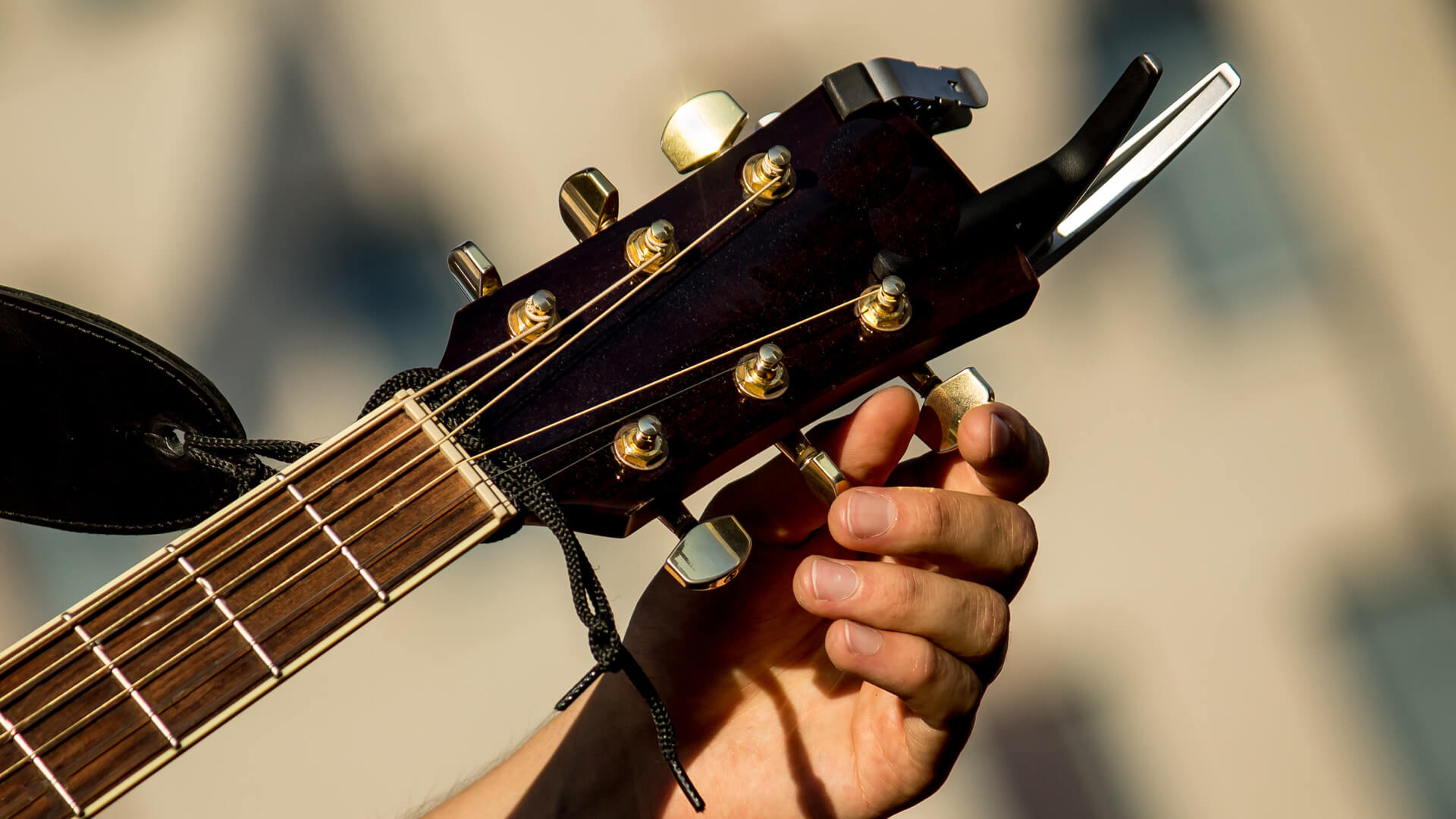Experimenting with different tunings can open up new dimensions on the acoustic guitar, giving you fresh tones and chord voicings that enrich your music. In this blog post, we’ll cover a few essential alternative tunings to explore, starting with Drop D and Open G, and dive into a few others worth experimenting with as well.
Whether you're aiming for richer harmonic textures, deeper resonance, or just looking to shake up your playing style, these tunings are a great place to start!
Get the Cheat Sheet Here!
1. Standard Tuning (EADGBE)
Before diving into alternative tunings, it’s good to acknowledge what makes standard tuning so versatile. EADGBE (from low to high) offers a balanced range that accommodates a wide variety of chords, scales, and fingerings. It's an excellent default, but sometimes you need something different to achieve specific tones and moods.
2. Drop D Tuning (DADGBE)
Drop D is one of the easiest alternative tunings to start with. To achieve Drop D, tune your low E string down a whole step to D, which gives you DADGBE from low to high. This creates a richer, fuller sound, especially for strumming and power chords.
Why Use Drop D?
- Ease of Power Chords: With the low D, you can play power chords using just one finger across the lowest three strings, making it ideal for rock and folk-inspired riffs.
- Extended Range: The deeper, bass-heavy sound adds resonance to your playing, making Drop D a go-to for genres like rock, folk, and blues.
- Example Songs: Songs like “Dear Prudence” by The Beatles, “Everlong” by Foo Fighters, and “Heart-Shaped Box” by Nirvana use Drop D to great effect.
3. Open G Tuning (DGDGBD)
Open G tuning creates a G major chord when you strum all six open strings, making it ideal for slide playing and classic open-string sounds. To get into Open G, tune your low E string down to D, your A string down to G, and your high E string down to D, resulting in DGDGBD.
Why Use Open G?
- Perfect for Slide Guitar: This tuning is popular in blues and rock for its suitability with slide guitar, as all strings harmonize well with a G chord.
- Easy Major Chords: Open G makes it easy to play major chords by barring across a fret, which is ideal for folk and blues.
- Example Songs: Open G is famously used by the Rolling Stones, especially in “Honky Tonk Women” and “Brown Sugar.”
4. DADGAD Tuning
Often associated with Celtic music, DADGAD tuning is loved for its droning sound and easy access to modal harmonies. As the name suggests, tune your guitar to DADGAD (low to high) by lowering the B and high E strings a whole step.
Why Use DADGAD?
- Droning Sound: The DADGAD tuning allows you to sustain notes across multiple strings, creating a droning effect that’s both harmonic and ambient.
- Versatile for Different Genres: Though popular in Celtic and folk music, DADGAD is also suitable for rock and even ambient guitar work.
- Example Songs: “Kashmir” by Led Zeppelin is one of the most famous examples of DADGAD, as well as pieces by contemporary fingerstyle guitarists like Pierre Bensusan.
5. Open D Tuning (DADF#AD)
Open D tuning gives you a D major chord when strumming all six open strings. Tune the guitar to DADF#AD by lowering the E, G, and B strings down to D, F#, and A, respectively.
Why Use Open D?
- Resonant Sound: Open D tuning provides a deep, resonant tone, often used in folk, country, and slide guitar.
- Ease of Chord Transitions: Major chords are easy to play with a single barre across the frets, making it great for quick chord changes.
- Example Songs: “Big Yellow Taxi” by Joni Mitchell and “Vestapol” by John Fahey are both in Open D tuning.
6. Nashville Tuning
Unlike other tunings, Nashville tuning doesn’t change the pitches of standard tuning but rather uses lighter-gauge strings for the low four strings (tuned an octave higher). This creates a “12-string” guitar sound with a chiming, jangly tone.
Why Use Nashville Tuning?
- Layering in Recordings: Nashville tuning is often used alongside a standard-tuned guitar in recordings to add depth and texture.
- Bright, Sparkling Tone: This tuning is ideal for creating a shimmery, ethereal sound in your playing.
- Example Songs: Nashville tuning is often used in country and pop music production, but it’s not as common in standalone songs.
7. Experimenting with Your Own Tuning
Once you’ve explored these tunings, don’t hesitate to experiment and come up with your own! Start by tuning individual strings up or down a whole step to see how it changes the chords and tonal landscape. Remember to adjust slowly and carefully to avoid putting undue tension on the neck and strings.
Final Tips for Tuning Exploration
- Get a Good Tuner: A reliable tuner helps with both precise tuning and swift changes.
- Experiment with Capos: A capo combined with alternative tunings can yield even more interesting sounds and chord voicings.
- Explore New Chord Shapes: Different tunings will require different fingerings, so play around and find shapes that sound good to you.
Exploring new tunings on the acoustic guitar is like learning a new language; each one reveals new melodic possibilities and fresh inspiration. Whether you’re playing folk, blues, rock, or just noodling around, these tunings are perfect for sparking creativity and breathing new life into your playing.


Thank you for this. I found it helpful. I'm a beginning guitar player and have heard these terms but didn't know how to do them